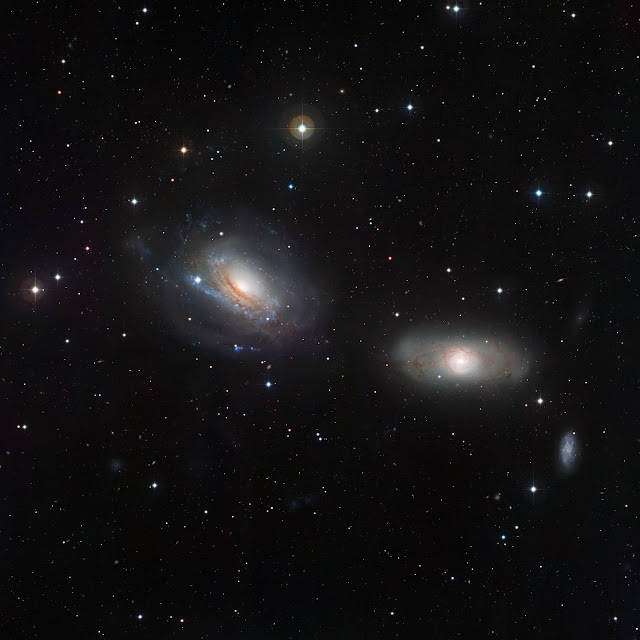Galaxies NGC 3166 & NGC 3169 in Sextans | European Southern Observatory
Spiral galaxies like NGC 3169 and NGC 3166 tend to have orderly swirls of stars and dust pinwheeling about their glowing centers. Close encounters with other massive objects can jumble this classic configuration, often serving as a disfiguring prelude to the merging of galaxies into one larger galaxy. So far, the interactions of NGC 3169 and NGC 3166 have just lent a bit of character. NGC 3169’s arms, shining bright with big, young, blue stars, have been teased apart, and lots of luminous gas has been drawn out from its disc. In NGC 3166’s case, the dust lanes that also usually outline spiral arms are in disarray. Unlike its bluer counterpart, NGC 3166 is not forming many new stars.
NGC 3169 has another distinction: the faint yellow dot beaming through a veil of dark dust just to the left of and close to the galaxy’s center. This flash is the leftover of a supernova detected in 2003 and known accordingly as SN 2003cg. A supernova of this variety, classified as a Type Ia, is thought to occur when a dense, hot star called a white dwarf—a remnant of medium-sized stars like our Sun—gravitationally sucks gas away from a nearby companion star. This added fuel eventually causes the whole star to explode in a runaway fusion reaction.

No comments:
Post a Comment